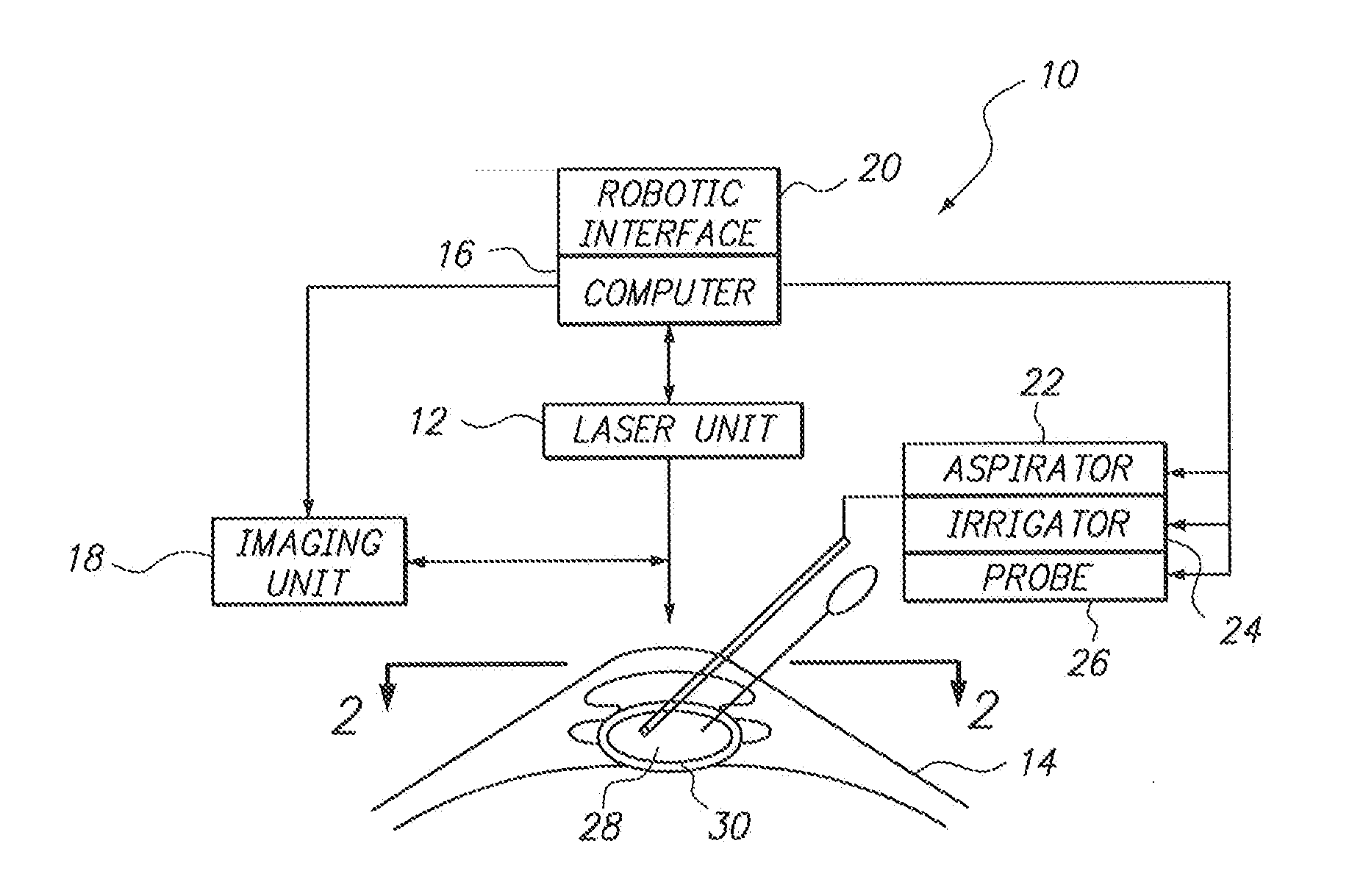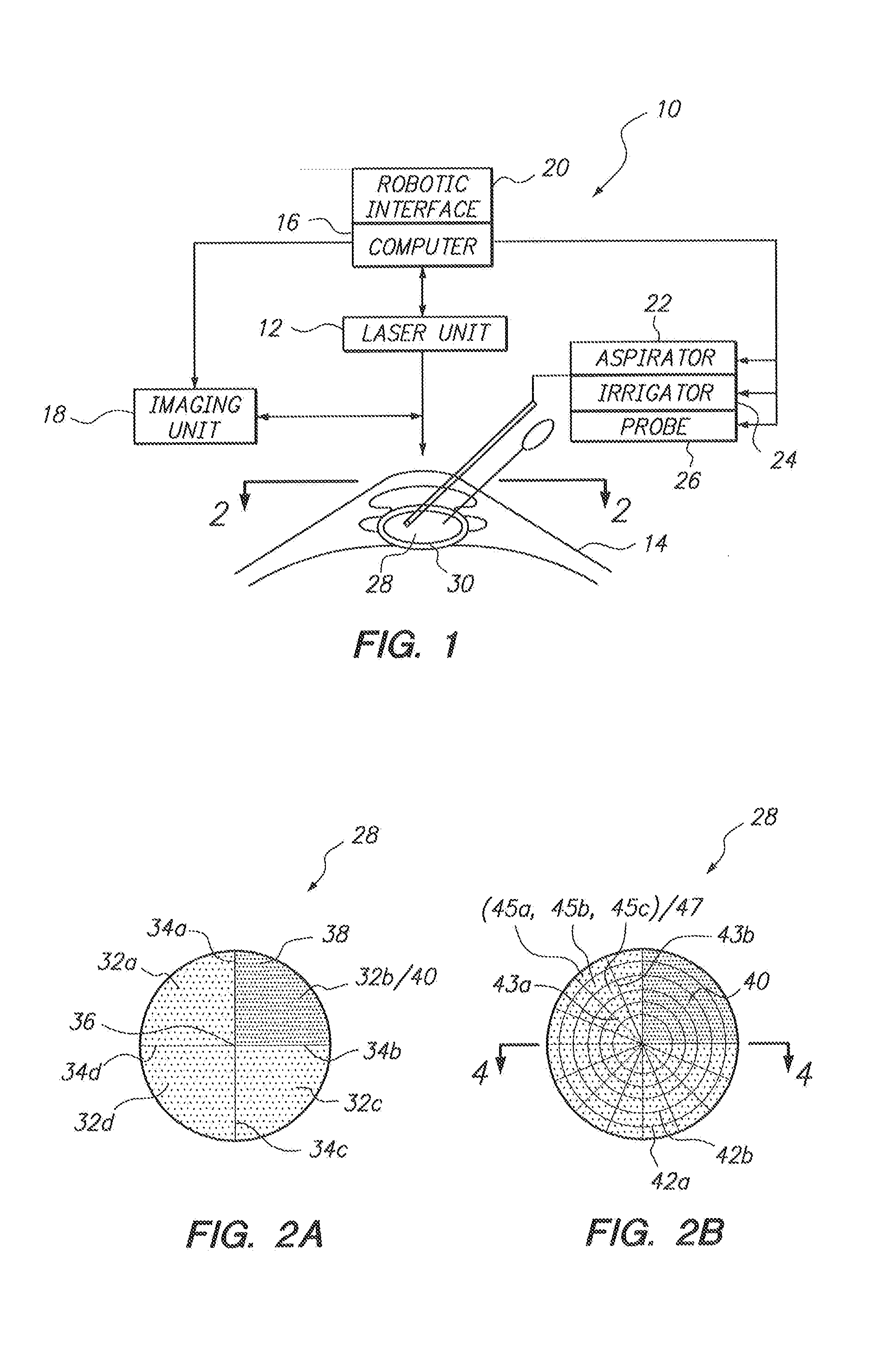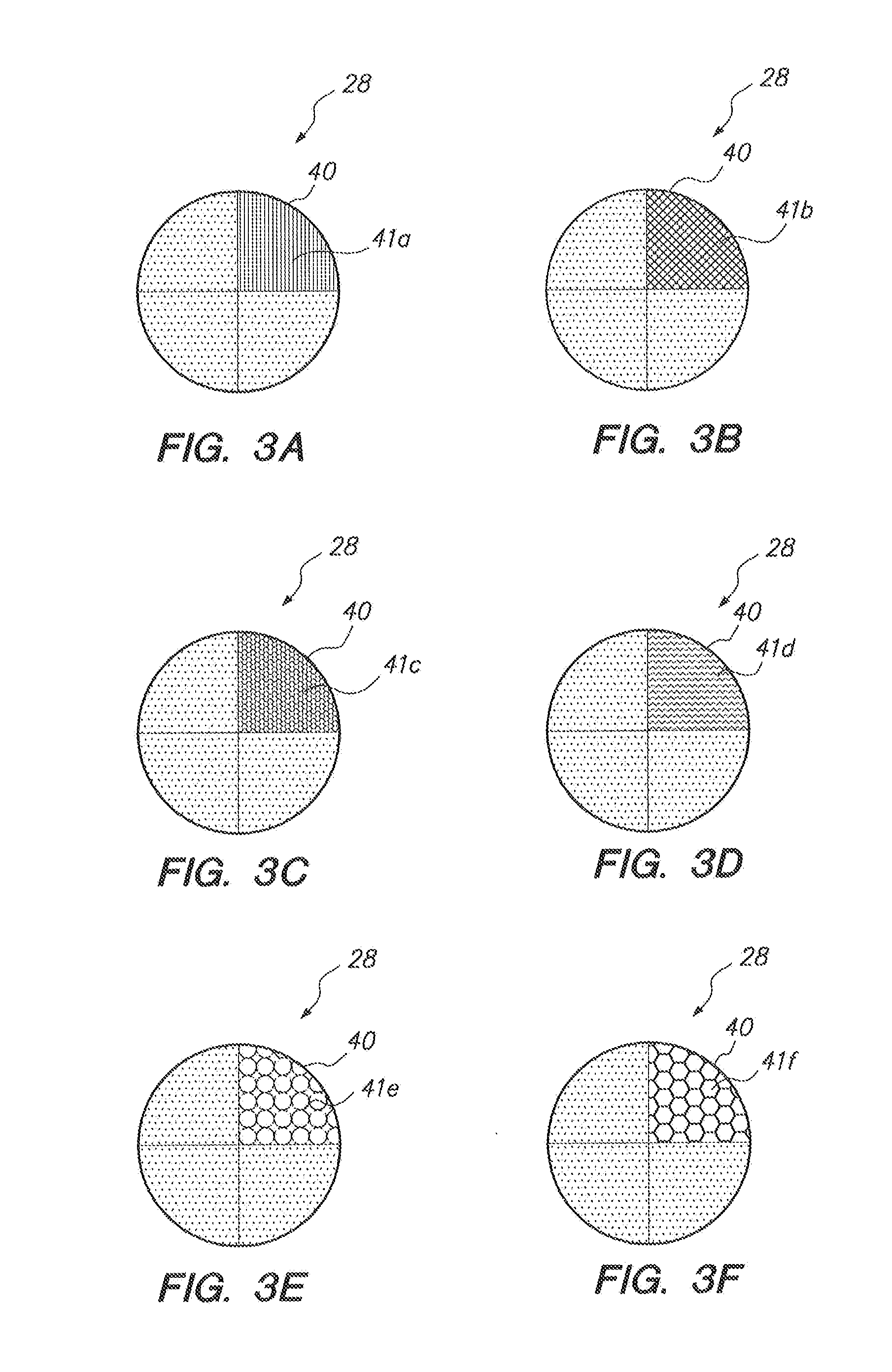System and Method for Performing Lens Fragmentation
a technology of lens fragmentation and system, applied in the field of ophthalmic surgery, can solve the problem of not effectively weakening the lens tissue, and achieve the effect of convenient access and manipulation
- Summary
- Abstract
- Description
- Claims
- Application Information
AI Technical Summary
Benefits of technology
Problems solved by technology
Method used
Image
Examples
Embodiment Construction
[0025]Referring initially to FIG. 1, a system for performing lens fragmentation during ophthalmic laser surgery is shown and is generally designated 10. As shown, the system 10 includes a laser unit 12 for performing Laser Induced Optical Breakdown (LIOB) on an eye 14 of a patient (not shown). Further, system 10 also includes a computer 16 for controlling the laser unit 12, and it includes an imaging unit 18 for producing an image of the eye 14 for use in planning and performing the lens fragmentation procedure.
[0026]FIG. 1 also indicates that the computer 16 includes a robotic interface device 20 that is selectively employed to allow the system 10 to be operated robotically. In detail, the robotic interface device 20 provides input commands for the computer 16 to collectively control: an aspirator 22, an irrigator 24, and a probe 26. As shown in FIG. 1, these three components are used to manipulate a lens 28 of the eye 14 during the lens fragmentation procedure.
[0027]Referring now ...
PUM
 Login to View More
Login to View More Abstract
Description
Claims
Application Information
 Login to View More
Login to View More - R&D
- Intellectual Property
- Life Sciences
- Materials
- Tech Scout
- Unparalleled Data Quality
- Higher Quality Content
- 60% Fewer Hallucinations
Browse by: Latest US Patents, China's latest patents, Technical Efficacy Thesaurus, Application Domain, Technology Topic, Popular Technical Reports.
© 2025 PatSnap. All rights reserved.Legal|Privacy policy|Modern Slavery Act Transparency Statement|Sitemap|About US| Contact US: help@patsnap.com



